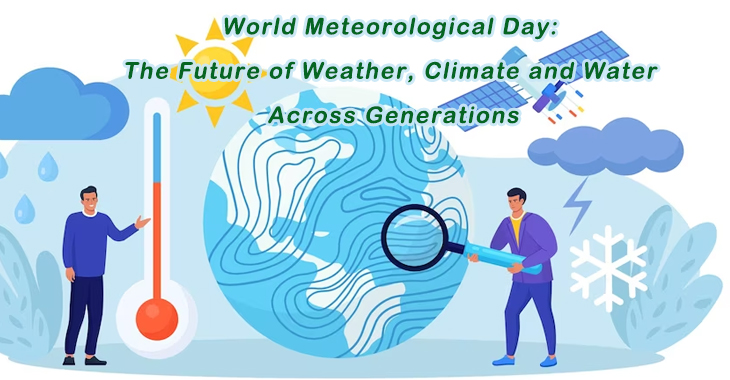
Weather predictions alone are no longer sufficient. Impact-based thinking is crucial to saving lives and livelihoods. Nonetheless, according to the World Meteorological Organization (WMO), one in three individuals are still not sufficiently protected by early warning systems as of March 23.
Climate change is causing weather, temperature, and water extremes to become more frequent and strong in many places of the world.
More exposure than ever to a variety of connected dangers that are themselves changing as a result of population increase, urbanisation, and environmental degradation affect more places of the world than before.
Better prevention, readiness, and reaction, according to the WMO, depend on greater collaboration between national meteorological and hydrological services, disaster management authorities, and development organisations.
We need to adopt a true multi-hazard, cross-border approach to advance towards global goals on climate action, catastrophe risk reduction, and sustainable development, it said. COVID-19 has exacerbated the difficulties facing society and undermined coping mechanisms, it added. Many lives can be saved and the livelihoods of people all over can be safeguarded by being ready and equipped to respond at the appropriate time and place.
So, the topic of this year’s World Meteorological Day, which falls on March 23, is “Early Warning and Early Action,” emphasising the critical role that hydrometeorological and climate information play in disaster risk reduction.
Increasing risks
A little more than 2 million people have died and $3.64 trillion has been lost in economic losses as a result of the more than 11,000 weather, climate, and water-related disasters that have been officially reported over the previous 50 years. That translates to an average of 115 fatalities and $202 million in economic losses per day around the world.
In the period from 1970 to 2019, there were five times as many disasters as there were economic losses, according to the World Meteorological Organization’s “Atlas of Mortality and Economic Losses from Weather, Climate and Water Extremes 1970-2019”.
However the number of fatalities has reduced nearly thrice since 1970, according to the WMO, because of increased early warnings and catastrophe risk reduction efforts.
Multi-Hazard Early Warning Systems Have Gaps
The WMO noted that there are significant gaps in meteorological data, particularly in Africa and Small Island Developing States, and that only 40% of WMO members have Multi-Hazard Early Warning Systems (MHEWS).
The WMO Global Multi-hazard Alert System (GMAS) aims to overcome the difficulties by making authoritative alerts and information from the WMO Severe Weather Information Centre more accessible and by encouraging quick action.
The GMAS aims to improve cross-border cooperation, capability, and national early warning systems and alerting authorities. It incorporates the so-called Common Alerting Protocol, which creates automated, standardised emergency alerts that are appropriate for all dangers and all forms of communication. What location is it in? When will it be? How awful is it? What should individuals do?
Experience has shown that simple warning signs and colour codes (such as red, amber, and green) are very effective.
Read More
Oscars 2023: PM greets ‘RRR’, ‘The Elephant Whisperers’ teams for winning Oscars